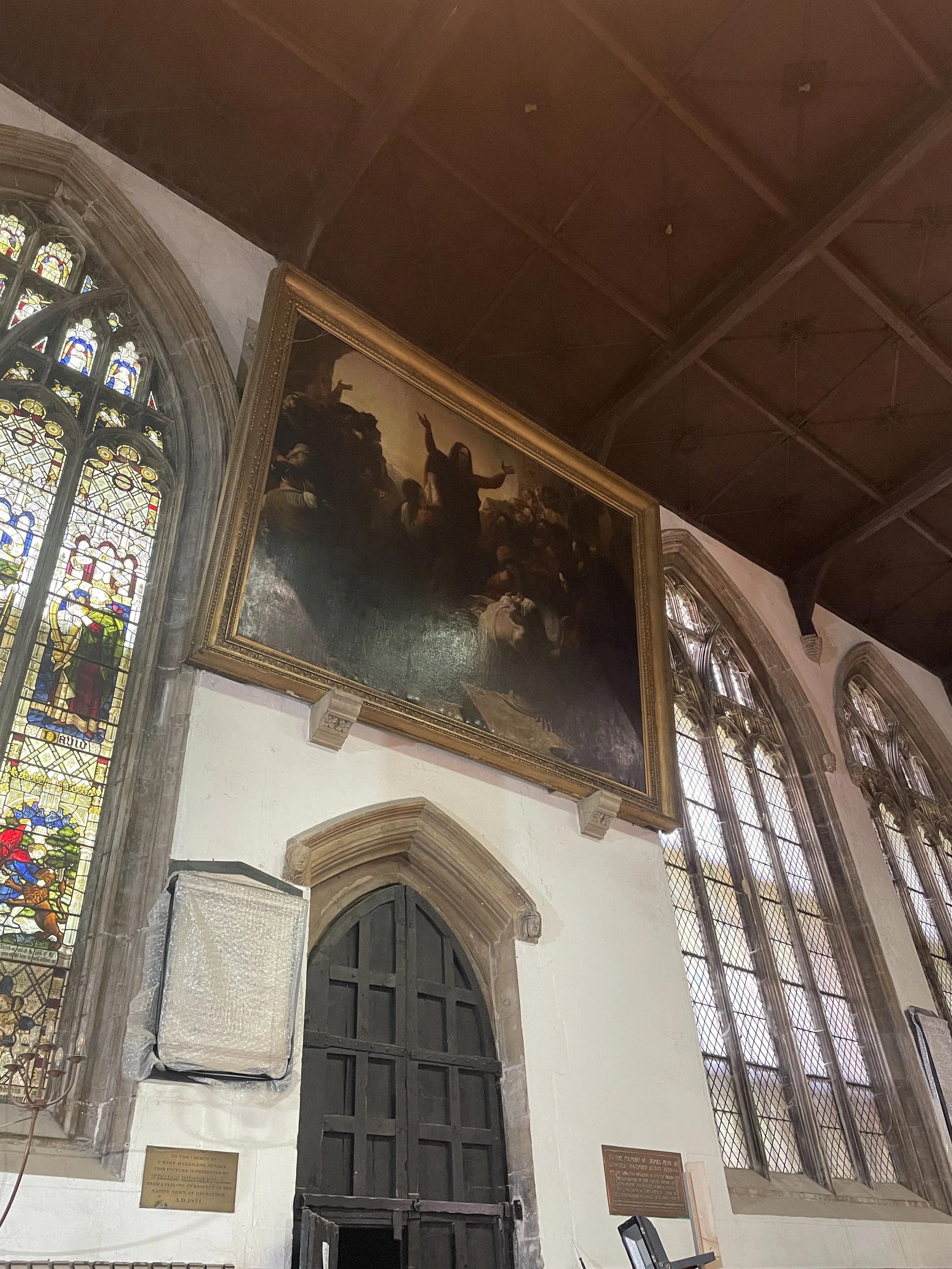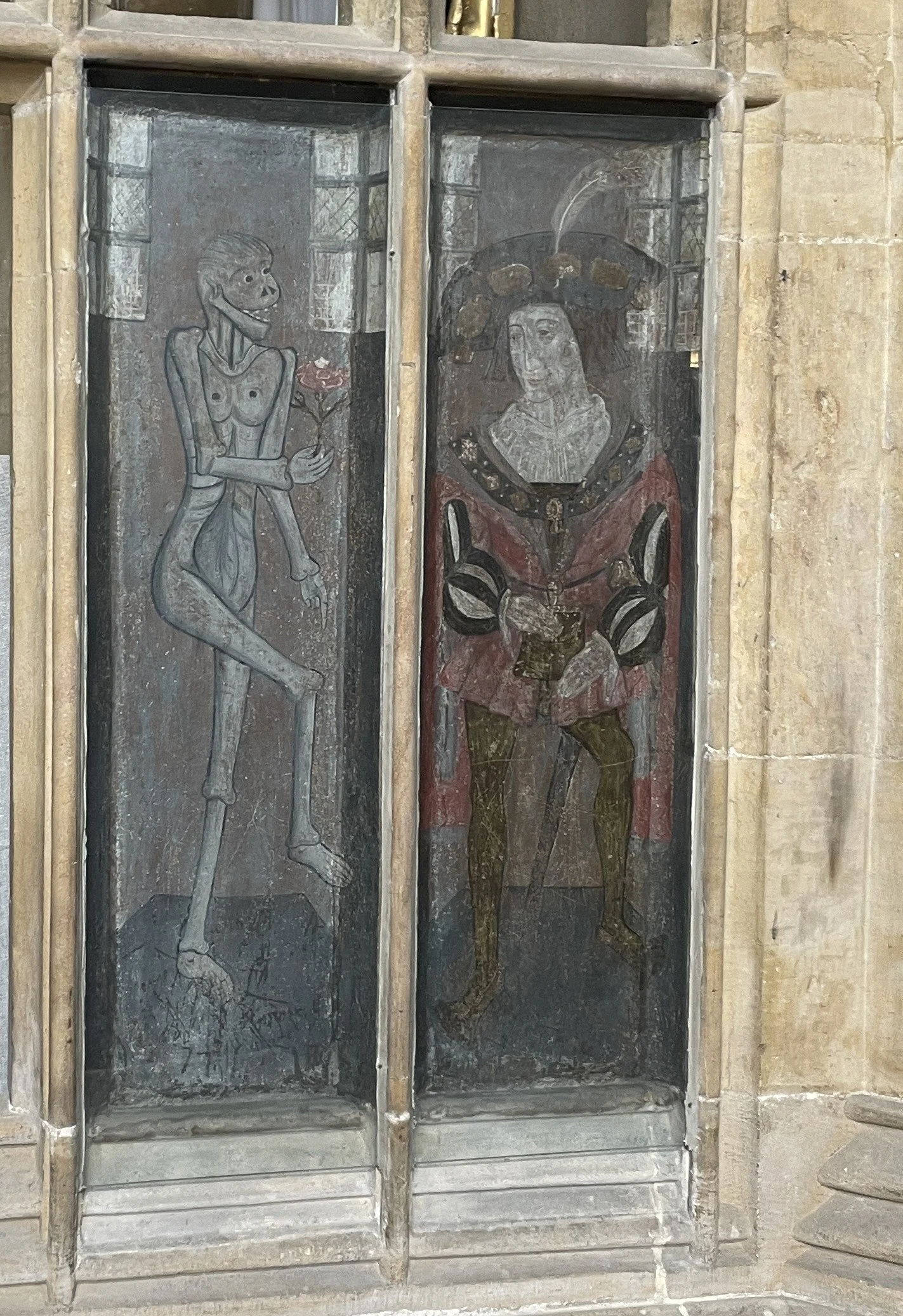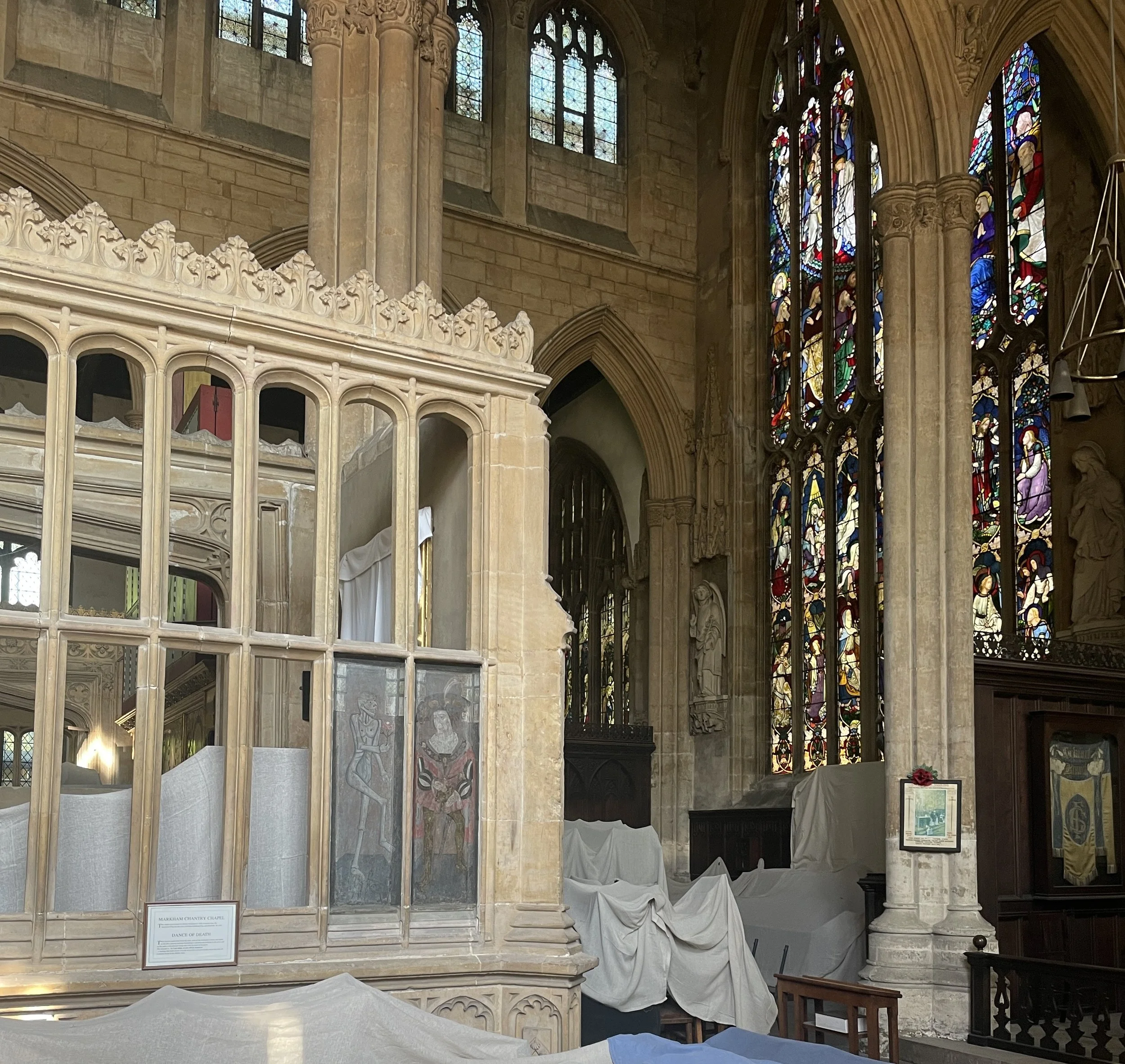A Pit-Stop Tour of St Mary Magdalene’s Artwork
By Natalie Thomas
St Marys has been closed to the public for over 8 months and has 6 months of restoration works to go before we can officially open our doors again. Unless you have had the pleasure to take part in a hard hat tour recently the wonderful art in the church has been hidden away. Additionally, many of you may have found our church during our journey of ‘Reawakening St Mary Magdalene’. There has been a church on this site for nearly a millennium and therefore, we have many artworks of immense historical interest of which this blog will give a quick pit-stop tour through a few of these. During this restoration project we have been taking care of these well, but they deserve to be appreciated until they can be visited again.
1- The Raising of Lazarus by William Hilton
This beautiful oil painting hangs on the North wall of St Mary’s and depicts the ‘Raising of Lazarus’. The artist was the son of a portrait and scenery painter from Newark. This piece was gifted to the Church by William in 1821 and originally used as the altarpiece before restoration works in the 1850’s replaced it with a reredos depicting the life of St Mary Magdalene.
The Raising of Lazarus, William Hilton RA
2- Medieval Stained Glass
While all of our stained glass is a remarkable sight, we have on particular window which is a key area of historical intrigue. The window that lights the Holy Spirit Chapel in the South Eastern Corner of St Mary Magdalene hosts artwork from the Medieval period, unlike the rest of our Victorian stained glass windows. During the English Civil War Cromwell’s army went through St Marys smashing the stained glass due to their puritan beliefs. Cromwell believed it was a form of idolatry and thought it led to people worshipping images rather than God. However, during the Victorian stained glass revival, in 1846 all of the medieval fragments of glass, which were smashed by Cronwell’s army, were salvaged from around the Church and painstakingly assembled in this window. Upon your future visit you will notice the mismatched patterns and incomplete patterns in this unique piece of artwork.
3- Dance of Death
It is assumed by many that these stone arches were just hollow decorative features. However, as shown by this surviving medieval artwork these arches were originally filled with artwork depicting biblical stories and messages. This artwork depicts the ‘Dance of Death’ showing a well-dressed man and a skeleton pointing to his grave. This aims to highlight the fragility man’s condition and that while you may be covered in riches, death is inevitable no matter your station in life. This message was meant to encourage churchgoers to realise what is important and to encourage moral reflection and worship. You can find this on the Markham Chantry Chapel near the vestry!
We hope you stop by to see our vast collection of biblical artwork upon our re-opening in December!








